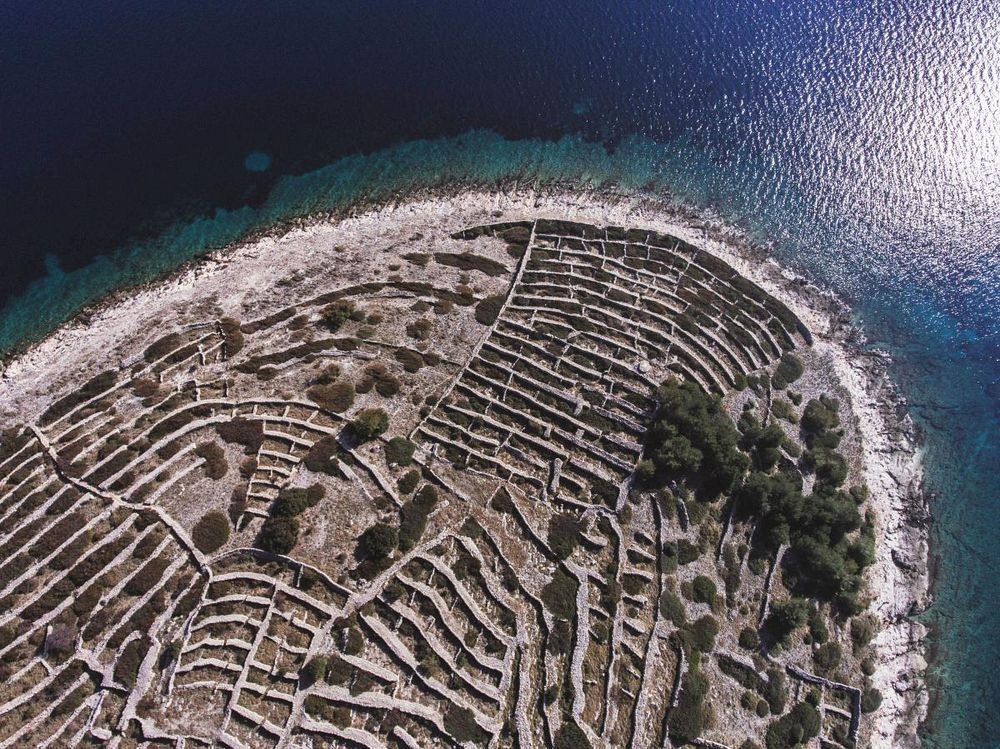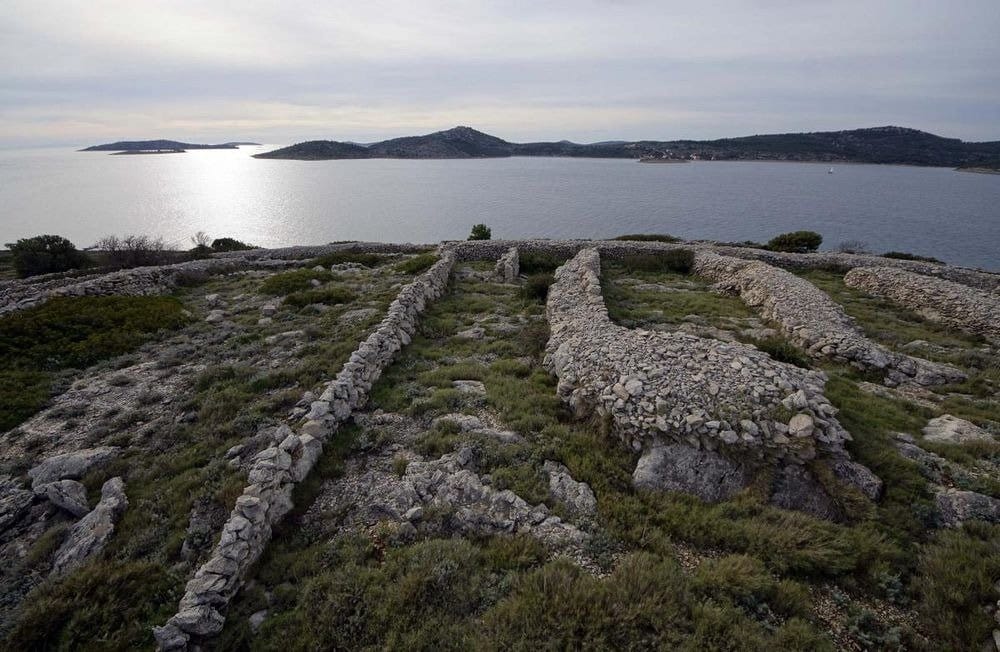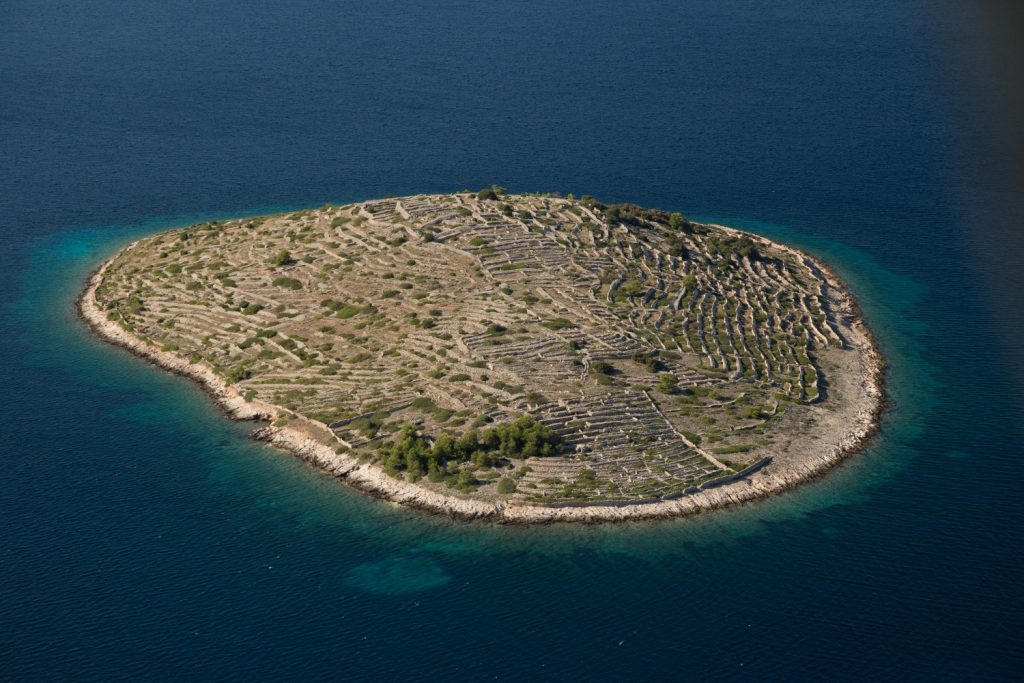Ancient city walls, emerald waterfalls, barbarian amphitheatres, and moon-like islands. Doesn’t it sound like something out of a dystopian novel? It is, nonetheless, real and can be found in Croatia.
The country’s tourism offers a variety of well-known natural and historic assets, but it is also essential to explore some of the lesser-known yet fascinating places. One of them is Baljenac (or Bavljenac), also known as Fingerprint Island.

The subject of who “created” the Fingerprint Island is widely asked. Is it a man-made creation? Is it a true natural wonder to behold? The answer is both. The island’s true image is created by the construction of dry stone walls known as suhozid. The length of the dry stone walls is quite unique; in this tiny 0.14km2 area, there are approximately 23 kilometres of dry stone wall.
The walls are built in the soil in circular motions, similar to the ridges on a human finger. When viewed from above, the routes of the stone walls, together with the circular shape of the area, give the island its unique appearance, resembling a human fingerprint.

The fingerprint island is situated off the coast of Sibenik, Croatia’s oldest town on the Adriatic Sea. Baljenac lies close to Sibenik’s Kaprije island, used as an agricultural area by the Kaprije inhabitants. They cleared the vegetation on Baljenac and built stone walls with their hands to plant vineyards and groves.

The dry stone structures and many other locations along Croatia’s coast, such as the Velebit mountains and the island of Pag, have survived to this day. The UNESCO-protected hand-built dry stone walls serve as a reminder of a time when individuals had to rely on their physical strength and toughness to survive in the agricultural world.


